Welcome back to Day II of The Top Ten Comics of the 2000’s. Ambush Bug here. Today Matt Adler provides his picks for the best of the best on the racks for the last ten years. You’re on, Matt!
Matt Adler’s Top Ten Comics of the 2000’s
Matt Adler here. Wow, a Top 10 list for the ENTIRE DECADE? We must be crazy, but hey, that’s why they call us @$$holes. I think. Anyway, for me this was a particular challenge, given my comic buying habits. I’ve been buying comics since the mid ‘80s at the wee age of 7; I took a hiatus for a few years at the end of the ‘90s, having been a Marvel Zombie burnt out by the cancellations and reboots of that era.
So, for me, the 2000s were a Renaissance of sorts; with the blinders of just following certain characters or a certain universe taken off, I was open to a whole new world of comics. The rise of the Internet comic community, starting on Usenet and spreading to the Web, played no small part in that; for the first time, we had access to countless other fans whose tastes we could compare with our own, and get recommendations for comics we might not ever have considered before. It also helped that in the 2000s, the writer became the star; whereas the ‘90s had a number of very dynamic artists, the 2000s brought many writers to the forefront who reminded us that comics first and foremost have to be about telling stories that you want to follow. This attitude even took hold at a reformed Marvel, led by Joe Quesada (ironically, Marvel’s first artist EiC) ascending to the top post in editorial in the year 2000.
The industry changed dramatically and suddenly at the beginning of this new millennium, and I can still remember that feeling in 2000, returning to a comic shop for the first time in several years, and looking around to realize how many strange and radically different comics were out there; perhaps the near-apocalypse the industry had faced in the ‘90s freed creators and publishers up to do whatever they wanted. I wanted to sample everything on that first trip, and I pretty much did; I brought home dozens of comics from many different publishers that day, and some of those held up well enough to have made my decade list below, which in and of itself is surprising, given that I have read hundreds of different series since getting back into the hobby, lo those many years ago.
So it was very tough to narrow those hundreds down to a measly 10; you get conflicted, and wind up repeating the “fair and balanced” mantra more than Fox News. Could you be unjustly influenced by nostalgia? Perhaps you might be unfairly leaning towards recent books, given that they’re fresher in your mind? Honestly, just coming up with a comprehensive list of books I liked over the past 10 years was a chore in and of itself. In the end, I wound up judging them based on two criteria which I felt were as close to objective as I could get in this sort of exercise. First, how long have I followed the particular series? I figure if I’ve stuck with a series through thick and thin, that’s a pretty solid measure of my enjoyment of it. Segundo, how often have I recommended the series to friends? If I’m sticking with it, but not recommending it, maybe it’s just a guilty fanboy pleasure with little redeeming value. So without further ado, here are the 10 series that made the cut out of an entire decade.
 #1. FABLES
Creators: Bill Willingham, Mark Buckingham, Lan Medina
Publisher: DC/Vertigo
Years running: 2002 – Present
#1. FABLES
Creators: Bill Willingham, Mark Buckingham, Lan Medina
Publisher: DC/Vertigo
Years running: 2002 – Present
FABLES takes the top spot both for its longevity (which shows no signs of slowing down; there’s already a spin-off series, JACK OF FABLES, as well as various miniseries , forays into the world of OGNs and prose novels, and more to come) and for its quality. It’s a relatively simple premise -- fairytale characters come into our world -- but the brilliance is in the execution. Bill Willingham makes these characters feel like real people, and has woven an intriguing backstory as to why they are here and how they are relate to us that frequently delves into the very roots of fiction itself, and shows Willingham to be an exceptionally thoughtful writer. He is aided most frequently by artistic collaborator Mark Buckingham, for whom it seems there is no imaginable scenario that cannot be rendered, always with the just the right mood, balancing the classical with the modern, the emotional with the whimsical, and the creepy with the absurd.

#2. Y: THE LAST MAN
Creators: Brian K. Vaughan and Pia Guerra
Publisher: DC/Vertigo
Years running: 2002 – 2008
While it was running, Y was like crack. You HAD to have the next dose, had to find out what was going to happen next. Creator Brian K. Vaughan wiped out the male half of the human race, except for one lone young man, Yorick Brown, and proceeded to take the reader on a voyage to answer the questions raised by that situation. Vaughan never took any easy way out, including not giving in to the natural assumption of many readers that the series would consist of Yorick scoring with every female in sight. Instead, Vaughan made it an intelligent exploration of societal dynamics that had a lot more to say about our own society than you would expect from a world so far removed from our own. If there is any regret, it’s that there’s no more Y, but it takes guts to take a stand that says “This is the story I have to tell, and I’m not going to drag it out artificially just because it’s become wildly popular.” Vaughan stuck to that, and that kind of integrity has to be respected.
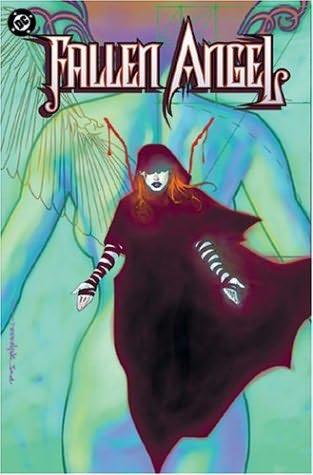
#3. FALLEN ANGEL
Creators: Peter David, J.K. Woodward, David Lopez
Publisher: IDW Publishing
Years running: 2003 – Present
The early part of this decade was a tumultuous time for Peter David; in 2002 he issued a public challenge to Marvel Comics to give more attention and promotion to his critically-acclaimed CAPTAIN MARVEL series, in the process generating an enormous controversy. The gamble worked; it garnered attention and reignited interest in PAD’s work, which led to DC launching his first ongoing creator-owned series, FALLEN ANGEL. Ironically, PAD’s DC ties ended as FALLEN ANGEL moved to independent publisher IDW, while Marvel and PAD mended fences, leading to the launch of the critically-acclaimed X-FACTOR and an exclusive Marvel contract (you only fight with the ones you love, I suppose!). But throughout both its DC and IDW runs, FALLEN ANGEL has remained an extremely intriguing book, and a compelling exercise in world-building that could not be done within the framework of the established universes. It effectively blends the world of noir with the world of the supernatural, and the city in which many of the stories take place, Bete Noir, is as much a character in the book as any of the players. In an impressive show of faith in PAD’s storytelling, Joss Whedon lent his Buffyverse character Illyria for the book’s most recent arc, something he has never done before. The book is currently continuing as a series of miniseries, similar to Mike Mignola’s HELLBOY.
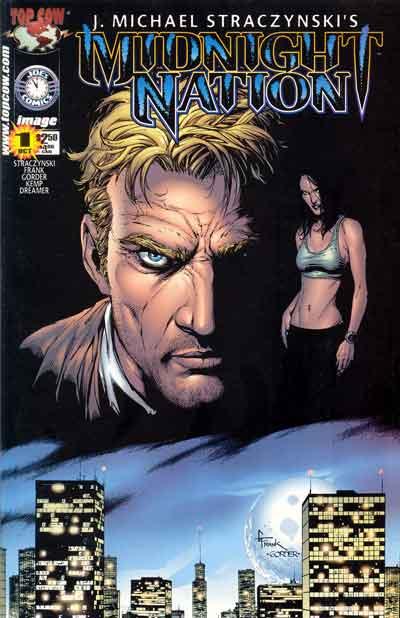
#4. MIDNIGHT NATION
Creators: J. Michael Straczynski and Gary Frank
Publisher: Top Cow
Years running: 2000 – 2002
The only limited series on the list, so you know it’s not here for longevity. In short, this book is really the total package; the story by J. Michael Straczynski has an extremely moving and personal message that will be especially relevant to anyone’s who’s experienced some dark times of their own, and the art by Gary Frank is, well…it’s Gary Frank. It’s gorgeous. The book is the perfect length at 12 issues; I have countless times handed the trade paperback to people who are new to or skeptical about comics, thinking it all spandex or Sunday funnies, and they are invariably blown away. The medium really needs more books like this: pure, self-contained stories whose only goal is to make an impact on the audience. That, more than movies or TV shows or celebrities, is what will make comics a truly mainstream art form.
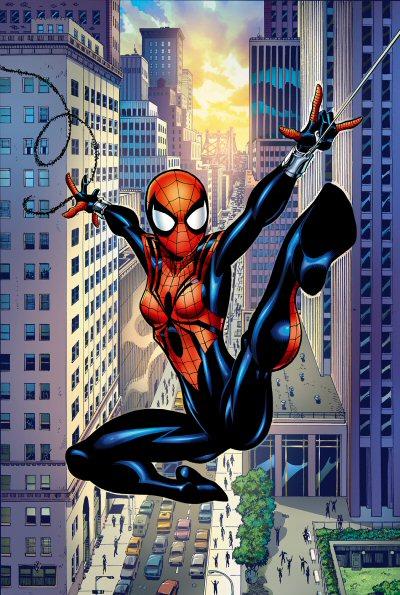
#5. SPIDER-GIRL
Creators: Tom DeFalco, Ron Frenz, Pat Olliffe
Publisher: Marvel Comics
Years running: 1998 – Present
SPIDER-GIRL might not be a book that would make most critics’ “Best Of” lists; it’s pretty much the definition of a conventional superhero book. And yet perhaps in these times, that’s not so conventional. Increasingly since the ‘80s, superheroes have become deconstructed, violent, cynical, and even ashamed at the idea of being a hero. So a book that proudly waves the hero flag, a book that shows a home life which while not perfect, is not hateful or dysfunctional, a book with a lead character that we actually LIKE and would want to be friends with, fills a gap that not many others do these days. And sure, it scratches that nostalgia itch too; so many of us grew up with the tales of the wise-cracking, web-slinging teenager who had to balance a superhero career with the most mundane of personal problems, so it’s nice to see that continued with the next generation, even as the main book has become bogged down with continuity reboots and editorial decisions that ring false to many. The fact that SPIDER-GIRL is the only Marvel feature of its era to continue through this decade and beyond is a testament to the fact that it fills that niche. And its recent move to the Digital Comics form (followed by serialization in the WEB OF SPIDER-MAN print series, and continued trade paperback collections), shows that Marvel realizes its continued appeal to readers new and old.
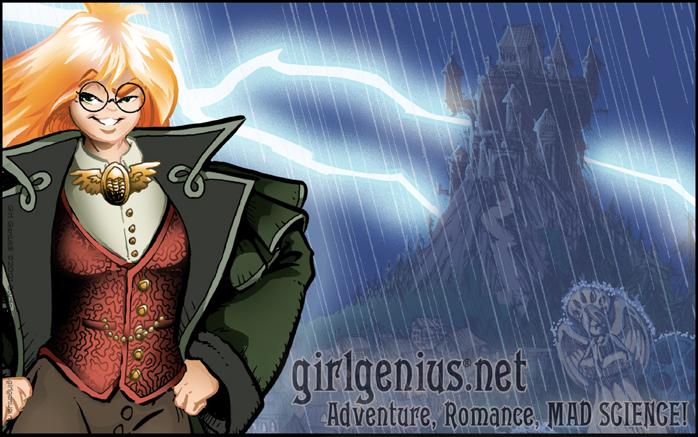
#6. GIRL GENIUS
Creators: Phil Foglio and Kaja Foglio
Publisher: Studio Foglio
Years running: 2001 – Present
GIRL GENIUS was probably the first truly independent comic I ever got hooked on; it helped that I was already a fan of Phil Foglio’s work from his art on the MAGIC: THE GATHERING card game. Like many of his pieces in MAGIC, GIRL GENIUS taps into Foglio’s love of drawing fantastic mechanical devices and bizarre creatures; along with writing and artistic collaborator, wife Kaja Foglio, GIRL GENIUS is simultaneously exciting, funny, and a pure pleasure to read. The series moved to the webcomics format in 2005, and though the entire series continues to be available to read for free online, I think once you get hooked, you’ll want to buy the collected editions as I do.
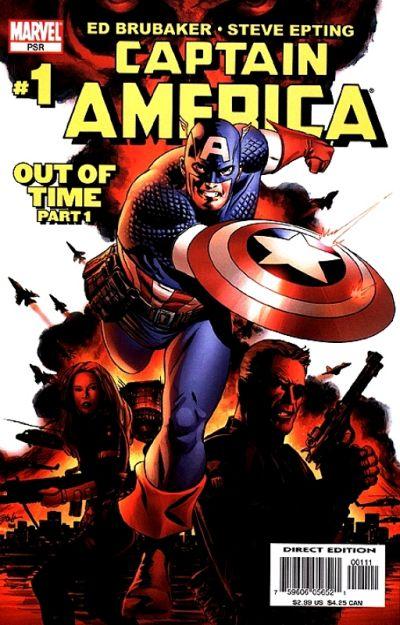
#7. CAPTAIN AMERICA
Creators: Ed Brubaker , Steve Epting, Mike Perkins, Luke Ross, et al.
Publisher: Marvel Comics
Years running: 2005 – Present
Ed Brubaker’s run on CAPTAIN AMERICA spun out of a line-wide reboot of the Avengers franchise; THOR was cancelled, IRON MAN relaunched with Warren Ellis at the helm, and Brian Bendis created the NEW AVENGERS. Overall, I was not happy with the circumstances that spawned this relaunch (see “Avengers Disassembled”), nor was I impressed for the most part with the new books. Brubaker’s Cap was the exception, and for it to have blown me away as much as it did is all the more surprising, given my feeling going in that the people behind the relaunches didn’t “get” the Avengers. Well, Brubaker definitely “gets” Captain America, and equally important, he knows how to tell one hell of a thrilling ongoing story. He didn’t throw the baby out with bathwater, either; he embraced and integrated all eras of Cap history (even bringing back my personal favorite villain Crossbones), while making it all seem fresh and relevant. The biggest moves of his run were bringing back Cap’s WWII sidekick Bucky (once thought dead) and having him take over as Cap after Steve Rogers’ assassination. This is the kind of move that could easily have turned awful; there was, after all, the fact fans certainly weren’t clamoring for the return of Bucky. Yet he made Bucky an interesting character in his own right, and even now, as it seems Steve Rogers is coming back, no one is in a rush to see things returned to the status quo. To so thoroughly and successfully revitalize a 70-year old franchise is a truly rare and impressive accomplishment.
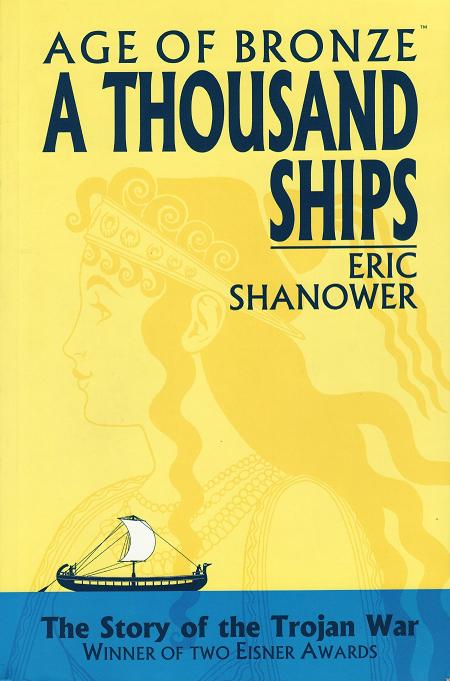
#8. AGE OF BRONZE
Creators: Eric Shanower
Publisher: Image Comics
Years running: 1998 – Present
Eric Shanower writes and draws this black & white series chronicling the story of the Trojan War. The most impressive thing about this series is the amount of research that has gone into historical accuracy: everything from the clothing to the armaments to the ships is rendered in fine detail. Shanower has even personally made trips to the historical sites involved in the Trojan War, and provides an extensive bibliography of the sources he used in research for the books. The task to capture a historically faithful recounting of the Trojan War is made more difficult by the fact that much of what we know of the tale comes not from history books, but from myths, legends of gods and goddesses interfering in the lives of mortals. Yet there is a historical basis for the Trojan War, and Shanower manages to skillfully strip away the supernatural elements to give us as close a feeling to what it would have been like to have lived in those times and through those events as possible. And there are no holds barred in terms of depicting the visceral, violent, and sexual events of the times (these are the ancient Greeks, remember), since as a creator-owned series, Shanower has complete control over content. Three trade paperback collections have been released so far, with four more expected to complete the series.
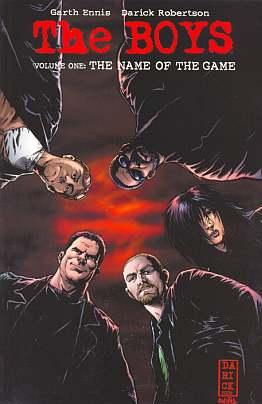
#9. THE BOYS
Creators: Garth Ennis and Darick Robertson
Publisher: Dynamite Entertainment
Years running: 2006 – Present
This is the series that Garth Ennis famously promised would “out-PREACHER PREACHER.” That’s a great marketing tagline, but it doesn’t quite capture what’s great about this series. Sure, it’s got mind-blowing gore and outrageous sexual situations. But the core of the series really centers on a theme that Ennis has touched on before in his previous work, but really delves into here: the idea that there may be something fundamentally flawed in the concept of superheroes (which happen to dominate the American comics marketplace). Chiefly, Ennis has a problem with the idea of glorifying a select number of individuals as “above” the rest of us, and he shows us the consequences of what such individuals would do with that kind of unchecked power (and in the process has fun having a group of “ordinary guys” take them down). This isn’t the first collaboration for Ennis and Robertson, who teamed for similarly over-the-top violence with Marvel’s NICK FURY and PUNISHER. Robertson seems game for anything Ennis throws at him (working with the warped sensibilities of Warren Ellis on TRANSMETROPOLITAN probably helped) and he makes every page worth spending several minutes looking over. The series probably will not have the same level of impact as PREACHER did in the ‘90s, but it’s still an excellent exploration of important questions that have relevance beyond just capes and tights, as well as a dose of guilty pleasure fun.

#10. THE LEAGUE OF EXTAORDINARY GENTLEMEN
Creators: Alan Moore and Kevin O’Neill
Publisher: Top Shelf Productions
Years running: 1999 – Present
We just got the first new LEAGUE comic in a while, in the form of the third volume, “Century”, which takes us on a trip through various LEAGUE incarnations in the 20th century, starting with the year 1910. Although this comic hasn’t come out with the regularity of some of the others on this list, the sheer quality and craftsmanship that goes into every issue earns it a spot for the decade. It is of course written by Alan Moore, whom many would name as the top comic writer of all time, but he doesn’t rest on his laurels with this series; every issue is so jam-packed with little details making subtle reference to the popular culture and fiction of its era that it has required outside annotators to go through and catalog them all. The series is really an exercise in watching a master at work, synthesizing the great works of fiction past and forming them into something partly resembling an adventure comic, and also in some ways slyly homaging the modern notion of a “superhero team.” Moore is aided in this effort by artist Kevin O’Neill, who won’t ever be mistaken for a conventional comics artist; he can portray elegant Victorian settings and then instantly switch modes into a fast-paced adventure. Much has been made of Moore’s difficulties with mainstream publishers; he’d sworn off working with DC Comics after numerous troubles, and LEAGUE was being published through Jim Lee’s WildStorm, then a part of Image Comics. But to Moore’s chagrin, WildStorm was bought out by DC, a situation he compared to moving away from your crazy ex-girlfriend only to find she’s bought out the block your new house is on. After more problems (not only with DC; the disastrous film adaptation of LEAGUE also comes to mind), Moore decided to move LEAGUE to independent publisher Top Shelf. Personally, I admire his commitment to the comics art form; it’s not comics he’s given up on (like some of his stature would), it’s the notion that they have to be controlled by someone other than their creator. LEAGUE embodies that attitude.
Honorable Mention: There are a couple of outstanding series that I would like to make note of (and encourage you to check out) even if they didn’t quite make the best of the decade list. They are:
Geoff Johns’ JSA
Kurt Busiek and Brent Anderson’s ASTRO CITY (DC Wildstorm)
Mark Waid and Mike Wieringo’s FANTASTIC FOUR (Marvel Comics)
Dan Slott and Paul Pelletier’s GLA (GREAT LAKES AVENGERS) (Marvel Comics)
Todd Nauck’s WILDGUARD (Image Comics)
J.M. DeMatteis and Mike Ploog’s ABADAZAD (Crossgen/BOOM! Studios)
Thanks for reading, and let me know your thoughts!
In most places, Matt Adler goes by the name his mother gave him, but occasionally uses the handle "CylverSaber", based on a character he created for the old DARK FORCES II: JEDI KNIGHT game (one hint of his overweening nerddom). He currently does IT and networking support for the government of Nassau County, NY, but his dream is to write for a living, and is in the process of figuring out how to get publishers to give his stuff a look. In the meantime, he passes the time by writing for AICN, CBR, and a few other places. He has also written for MARVEL SPOTLIGHT magazine.
Editing, compiling, imaging, coding, logos & cat-wrangling by Ambush Bug
Proofs, co-edits & common sense provided by Sleazy G
 #1. FABLES
Creators: Bill Willingham, Mark Buckingham, Lan Medina
Publisher: DC/Vertigo
Years running: 2002 – Present
#1. FABLES
Creators: Bill Willingham, Mark Buckingham, Lan Medina
Publisher: DC/Vertigo
Years running: 2002 – Present 








